
| Starting price | $59/mo |
|---|---|
| Free trial | Yes, 30 days |
| Free version | No |
Managing emails shouldn’t slow you down. The right email software improves communication, saves time, and organizes your inbox. This guide covers the top tools to streamline your email workflow in 2025. You’ll find something that matches your workflow whether you’re a freelancer, part of a small team, or scaling a growing business.
Choosing the right tool can transform how you handle emails daily. Below, we've rounded up the best email management software of 2025. Each tool offers a unique set of features, so it will be easy to spot which one works best for your team.

| Starting price | $59/mo |
|---|---|
| Free trial | Yes, 30 days |
| Free version | No |

| Starting price | $49/month |
|---|---|
| Pricing model | Mailbox |
| Free trial | Yes |
| Free Version | No |

| Starting price | $18/mo |
|---|---|
| Pricing model | Per-user |
| Free Trial | 21-day |
| Free Version | Yes |

| Starting price | $5.99/mo |
|---|---|
| Pricing model | Per License |
| Free Trial | 30-day |
| Free Version | Yes |
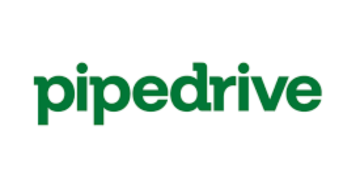
| Starting price | $15/mo |
|---|---|
| Pricing model | Per User |
| Free Trial | 14-day |
| Free Version | No |

| Starting price | $16/mo |
|---|---|
| Pricing model | Tiered |
| Free Trial | 14-day |
| Free Version | No |

| Starting price | $9.99 |
|---|---|
| Pricing model | Subscriber based |
| Free Trial | No |
| Free Version | Yes |
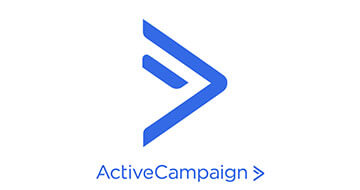
| Starting Price | $11/mo |
|---|---|
| Pricing Model | Per User |
| Free Trial | 14-day |
| Free Version | No |

| Starting price | $19.99/mo |
|---|---|
| Pricing model | Subscriber based |
| Free Trial | No |
| Free Version | Yes |

| Starting price | $15/mo |
|---|---|
| Pricing model | Subscriber based |
| Free Trial | No |
| Free Version | Yes |

| Starting Price | $40/mo |
|---|---|
| Pricing Model | Subscriber based |
| Free Trial | 14-day |
| Free Version | No |

| Starting price | $49/month |
|---|---|
| Pricing model | Subscriber Based |
| Free Trial | 7-day |
| Free Version | Yes (Up to 500 contacts and limited features) |
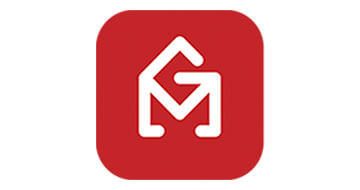
| Starting price | 19.95 / mo |
|---|---|
| Pricing model | Subscriber based |
| Free Trial | No |
| Free Version | No |
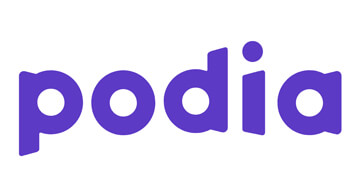
| Starting price | $39/mo |
|---|---|
| Pricing model | Per User |
| Free Trial | 14 day |
| Free Version | No |

| Starting price | $24/mo |
|---|---|
| Pricing model | Subscriber based |
| Free Trial | No |
| Free Version | Yes |
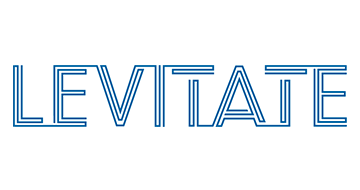
| Starting Price | $150/month |
|---|---|
| Pricing Model | Subscriber based |
| Free Trial | Yes |
| Free Version | Yes |

| Starting price | $18/mo |
|---|---|
| Pricing model | Per User |
| Free Trial | No |
| Free Version | Yes |
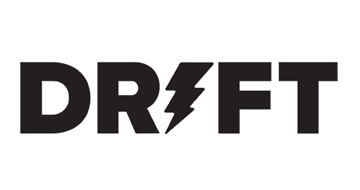
| Starting price | Quote only |
|---|---|
| Pricing model | Quotation based |
| Free Trial | No |
| Free Version | Yes |
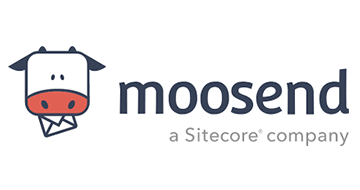
| Starting price | $9/month |
|---|---|
| Pricing Model | Subscriber based |
| Free Trial | Yes |
| Free Version | No |
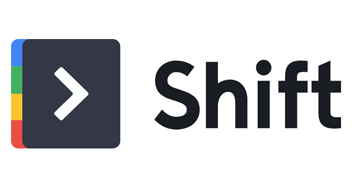
| Starting Price | $119/year |
|---|---|
| Pricing Model | Per User, Subscriber based |
| Free Trial | Yes |
| Free Version | Yes |
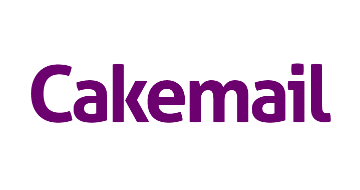
| Starting Price | $8/month |
|---|---|
| Pricing Model | Subscriber based |
| Free Trial | No |
| Free Version | Yes |

| Starting price | $15/mo |
|---|---|
| Pricing model | Subscriber based |
| Free Trial | No |
| Free Version | Yes |

| Starting Price | $4/month |
|---|---|
| Pricing Model | Subscriber based |
| Free Trial | Yes |
| Free Version | No |

Why We Picked It: AWeber is an all-in-one approach to email management. It offers professional-grade email automation, templates, segmentation, and analytics. Users can create newsletters, drip campaigns, and subscriber journeys with ease. Even though it has powerful features, it’s surprisingly easy to use.
| Pros | Cons |
|---|---|
Email management software helps individuals and businesses to organize and streamline their email communication. These tools help you take control of your inbox by sorting messages, flagging important emails, filtering out spam, and even automating replies.
The goal of using these tools is to save time and brainpower. With features like automation and intelligent filters, you can boost your reply rate and stop important emails from falling through the cracks. Businesses love it too. It helps teams respond faster and archive communication for compliance and records.
Moreover, the market for email management services is booming. With more people working remotely and relying on digital workflows, email management solutions are becoming a must.
Email management software simplifies how you handle incoming and outgoing messages. It starts by automatically filtering emails.
For example, moving spam out of the way and sorting messages into folders or categories based on rules you set. You can also tag or label emails to prioritize important conversations. Many tools allow you to set auto-responses, so customers or clients get instant replies even when you’re away.
Inbox rules help automate tasks like forwarding messages, archiving threads, or flagging certain senders. Collaboration features let team members assign emails, leave internal notes, and avoid duplicate replies. Some platforms also offer analytics that show response times, email volume, and overall performance.
Cluttered inboxes slow you down. But email management systems fix that by filtering out spam and sorting messages with tags and folders. This organization lets you focus on high-priority emails and manage tasks more efficiently.
These tools enable you to assign emails, leave internal notes, and track ownership, all in one place. This prevents duplicate replies, missed messages, or confusion. With full visibility into ongoing conversations, collaboration becomes seamless.
With auto-responders, smart alerts, and clear organization, your team can reply to emails faster and more accurately. No more digging through piles of messages.
With all email conversations stored in one place, teams can quickly search past threads, review customer history, and keep full context. This improves issue resolution and ensures consistent communication.
Choosing the right email management system starts with knowing what features matter most for your team’s workflow:
For small businesses and teams, these core features are essential to stay organized and responsive:
If your business handles high email volume or has a large support or sales team, these advanced features can offer serious value:
Start by clarifying what you want the software to do. Are you focused on managing customer support emails, running email campaigns, or simply decluttering your inbox? Your primary goal will help you filter out tools that don’t align with your needs and save time during evaluation.
A solo professional won’t need the same features as a 20-person support team. Think about how many users will access the tool, how they’ll collaborate, and whether you need role-based permissions or shared inboxes.
Your email tool should match your priorities. If your goal is managing volume, look for strong filters and automation. If protecting your sender’s reputation matters most, choose software with smart replies, delivery monitoring, and spam control.
A complicated tool can slow your team down. Choose software with a clean, intuitive interface that doesn’t require hours of training. User-friendly platforms reduce onboarding time, increase adoption, and ensure everyone can work efficiently without getting bogged down by the system.
The best email software works seamlessly with your current tools. Check for compatibility with email platforms like Gmail or Outlook, and look for integrations with CRMs, project management tools, or customer support systems. These connections help create a unified workflow and eliminate switching between apps.
Getting started with an email manager is easier than you might think. Here’s what you need to know.
Once you’ve chosen your software, follow these steps to get up and running efficiently:
1. Connect your existing email account to sync messages and maintain continuity.
2. Create inbox rules to automatically sort incoming messages based on sender, keywords, or subject lines.
3. Set up auto-responses to keep communication flowing even when you’re unavailable.
4. Assign user roles and permissions to avoid overlap and confusion.
5. Use tagging or color-coding systems to categorize messages by urgency, project, or team member. This visual organization helps teams focus and respond faster.
To choose the right email management tool, you must ensure the tool’s pricing model is suitable for your needs and budget. Here’s how to navigate your options wisely.
Are you unsure whether to use a free plan or pay for extra features? Here’s how both options compare:
| Feature | Free Plan | Paid Plan |
|---|---|---|
| Inbox organization | Folders, filters | Advanced rules, unlimited labels |
| Automation | Limited or none | Custom workflows, auto-tagging |
| Analytics | Not included | Email tracking & performance data |
| Team collaboration | Single user or limited | Shared inbox, role-based accessIntegrations |
| Integration | Basic only | Premium CRM/helpdesk connections |
The sticker price isn’t the only cost to consider. Some software charges per user, so the more your team grows, the higher your monthly cost. Others limit storage or charge extra for integrations with popular CRMs, helpdesks, or project tools.
Also, consider support. Some platforms offer limited help to free users. Always review what’s included in each plan and calculate the monthly or annual cost based on your team size and tool requirements. This way, you’ll avoid surprises and ensure your budget covers the long-term needs of your business.
Here are some cool tips to get the most out of your email management app:
1. Start with freemium tools: Choose platforms that offer free plans with room to upgrade as your needs grow.
2. Take advantage of annual billing discounts: Many providers offer lower monthly rates if you pay annually—helping you save long-term.
3. Look for bundled packages: Tools that combine email with CRM or marketing automation often deliver more value for growing teams.
4. Focus on essential features: Identify what your team truly needs for day-to-day operations. Skip the extras that look good but add little impact.
5. Test with free trials: Use trial periods to run your real workflows. Make sure the software handles your daily tasks before committing.
Modern email tools are embracing AI to cut down manual work. AI sorts emails by priority, flags important contacts, and can even generate responses. SaneBox is popular for using machine learning to automatically filter distractions.
Email platforms now offer detailed analytics dashboards that help teams track metrics like open rates, reply time, and customer satisfaction. With this data, businesses can refine workflows and pinpoint bottlenecks.
The lines between email, chat, and social messaging are fading fast. Tools like Zoho and HubSpot now combine them into one dashboard.
Studies show that companies with strong omnichannel engagement strategies retain an average of 89% of their customers. In contrast, those with weaker strategies only retain about 33% of their customers. It’s a clear indication that today’s customers expect smooth, connected experiences.
What’s the “best” email management software? Honestly, there’s no one-size-fits-all winner here. It all depends on your needs.
Each of these tools we’ve discussed bring something different to the table. What works for a solo freelancer may not suit a multi-person support team, so it’s essential to assess your goals, team size, and workflow.
Before committing to a paid plan, take advantage of free trials, freemium tiers, and demos. Use this time to explore interface usability, available integrations, and support options. With the right email management software, your team can streamline communication, save time, and boost responsiveness.